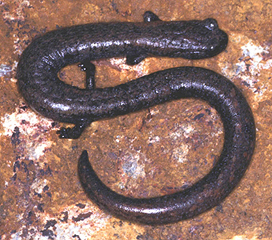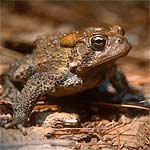- Home
- About S&T
- Taxa/Organisms
- Ecosystems
- Issues
- Methods & Tools
- Reports & Publications
- Location
- Search
Publisher: USGS | Science Center: Florida Integrated Science Center (FISC, Gainesville) | Format: URL
fl.biology.usgs.gov — The objectives of Southeastern ARMI are to determine the status and trends of amphibian populations on DOI lands in the southeastern United States and U.S. Caribbean and to provide information useful in determining causes of declines should they be discovered. Meeting the needs and expectations of the Nation for monitoring the status of More...

Publisher: USGS | Science Center: Patuxent Wildlife Research Center (PWRC, Laurel) | Format: URL
www.pwrc.usgs.gov — This web resource is a collaborative effort among regional partners, such as state natural resource agencies and nonprofit organizations, and the U.S. Geological Survey (USGS) to monitor populations of vocal amphibians. Amphibian population data are collected using a calling survey technique, in which observers identify local amphibian species by More...

Publisher: USGS | Science Center: Patuxent Wildlife Research Center (PWRC, Laurel) | Format: URL
www.pwrc.usgs.gov — The NAAMP is a collaborative effort among regional partners, such as state natural resource agencies and nonprofit organizations, and the U.S. Geological Survey (USGS) to monitor populations of vocal amphibians. The USGS provides central coordination and database management. The regional partners recruit and train volunteer observers to collect More...

Publisher: USGS | Science Center: Forest and Rangeland Ecosystem Science Center (FRESC, Corvallis) | Format: URL
fresc.usgs.gov — There is a relatively rich herpetofauna in southwestern Oregon with about 38 species present. These species are almost equally divided between amphibians and reptiles. The objective of this issue overview is to conduct field surveys and assess status of several amphibian species of management concern, including: Western toad (Bufo boreas), Cascade More...

Publisher: USGS | Format: URL
pubs.usgs.gov — The steps necessary to conduct a pitfall trapping survey for small terrestrial vertebrates are presented. Descriptions of the materials needed and the methods to build trapping equipment from raw materials are discussed. Recommended data collection techniques are given along with suggested data fields. Animal specimen processing procedures, More...

Publisher: USGS | Science Center: Florida Integrated Science Center (FISC, Gainesville) | Format: URL
fl.biology.usgs.gov — This website links to descriptions, images, and vocalizations of Amphibians & Reptiles of the Southeastern United States and the U.S. Virgin Islands. Species profiles for Frogs and Toads, Salamanders, with a Glossary of Useful Herpetological Terms, as well as links to FISC's Herpetology Program, the Southeast ARMI initiative, Southeast ARMI Fact More...

Publisher: USGS | Science Center: Western Ecological Research Center (WERC, Sacramento) | Format: URL
www.werc.usgs.gov — This site is a field guide to the reptiles and amphibians of coastal Southern California, including species accounts, illustrations of tadpoles, and images of different habitat types. The guide also contains a glossary of terms, a map of the study area, and types of habitats.

Publisher: USGS | Science Center: Forest and Rangeland Ecosystem Science Center (FRESC, Corvallis) | Format: URL
fresc.usgs.gov — An overview of research that defines the distribution and habitat requirements of amphibians and reptiles in southern Oregon, mostly in old-growth forests or alpine habitats. Includes links to USGS publications resulting from this research.

Publisher: Other Federal Agency (National Wildlife Federation) | Format: URL
www.nwf.org — Frogwatch USA website is a long-term frog and toad monitoring program managed by the National Wildlife Federation in partnership with the United States Geological Survey. This resource provides valuable information about frog and toad distributions, population trends at individual wetlands, and yearly patterns of frog and toad breeding activity.

Publisher: USGS | Science Center: Florida Integrated Science Center (FISC, Gainesville) | Format: URL
fl.biology.usgs.gov — This website is a list of amphibians of the Southeastern United States, Puerto Rico, and the U.S. Virgin Islands. The data provided in this checklist includes Taxa, Code, the number of species recognized in the region, Reproduction data (aquatic or terrestrial), the species Aquatic Habitat, whether the species has a mating call, its Life History, More...

Publisher: NBII | Format: URL
www.nbii.gov — The NBII Amphibians Web site serves as a resource for individuals to learn about amphibians and factors affecting global amphibian populations. This site allows citizen scientists to contribute informative reports regarding local amphibian populations, thereby assisting the greater scientific community's efforts to better understand amphibian More...

Publisher: NBII | Format: URL
www.nbii.gov — A web resource for research in amphibian declines phenomena, habitat loss, climate change by exposure to UV radiation, contaminants and pollutants, disease, and predation by invasive species. General resources relating to declines phenomena and monitoring tools and resources are available on this webpage.
